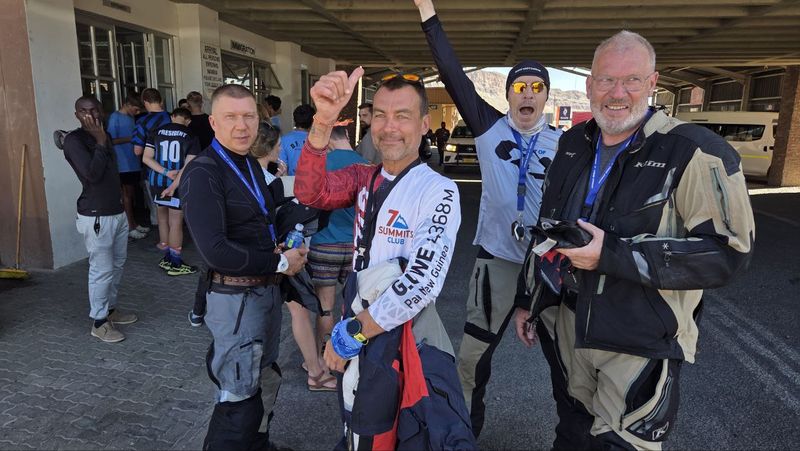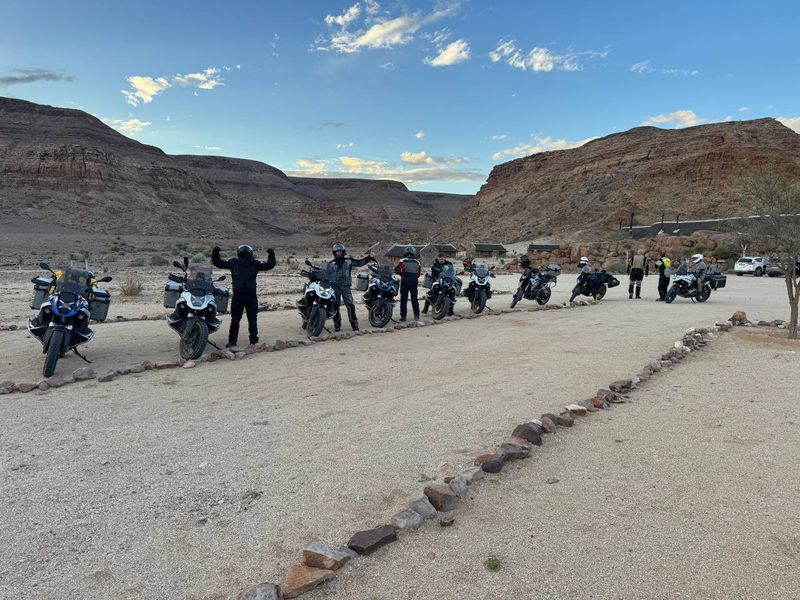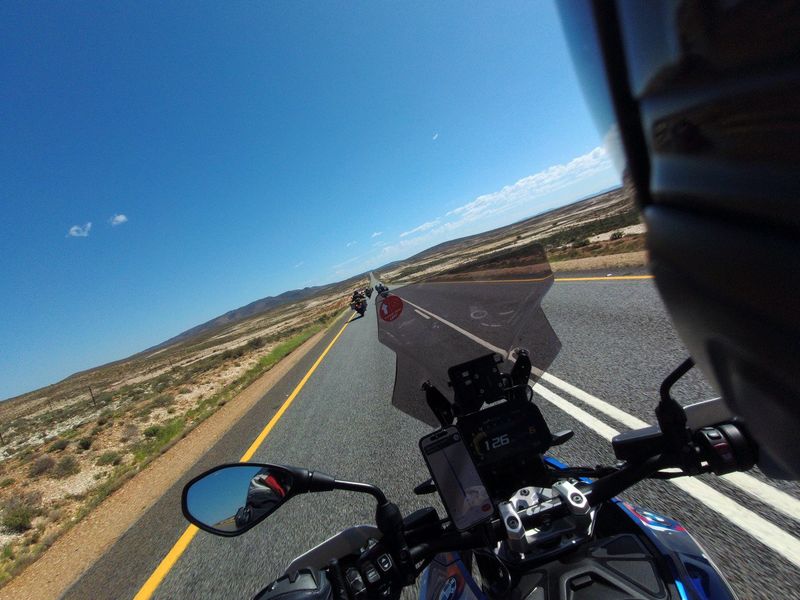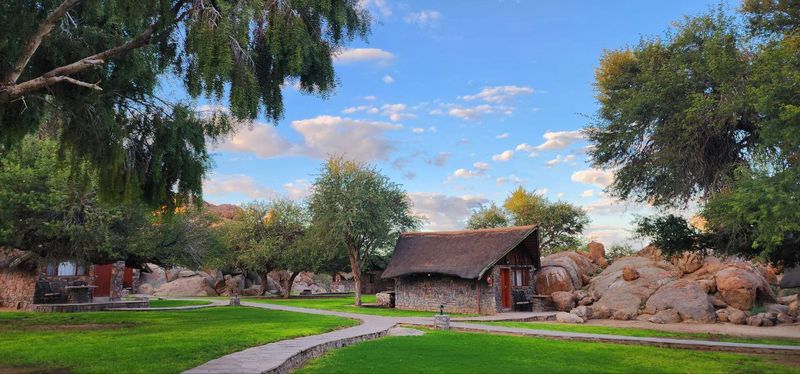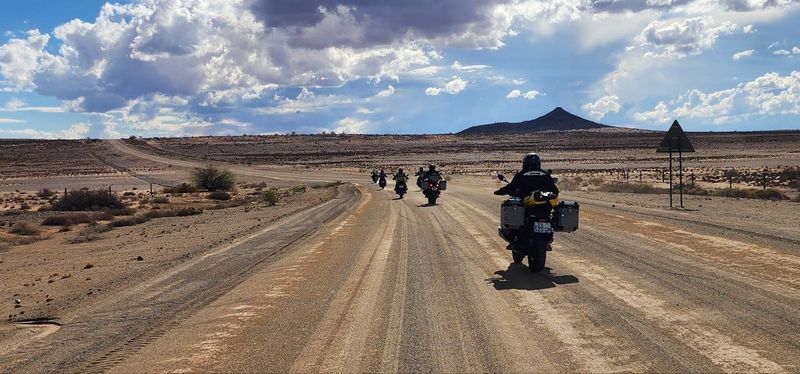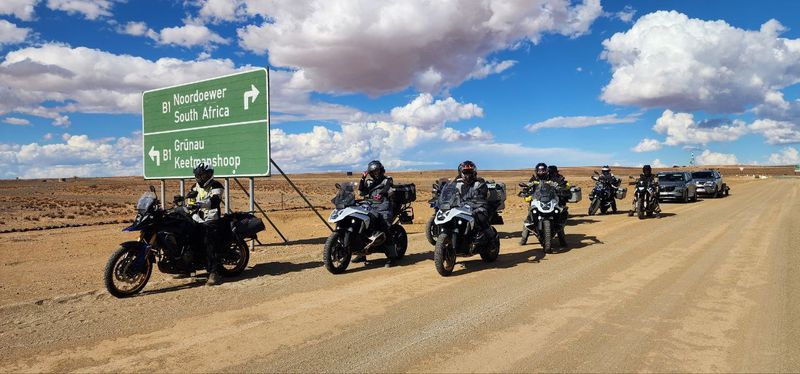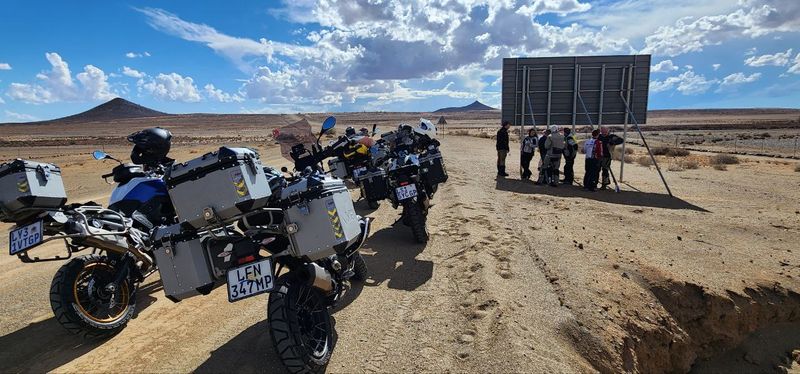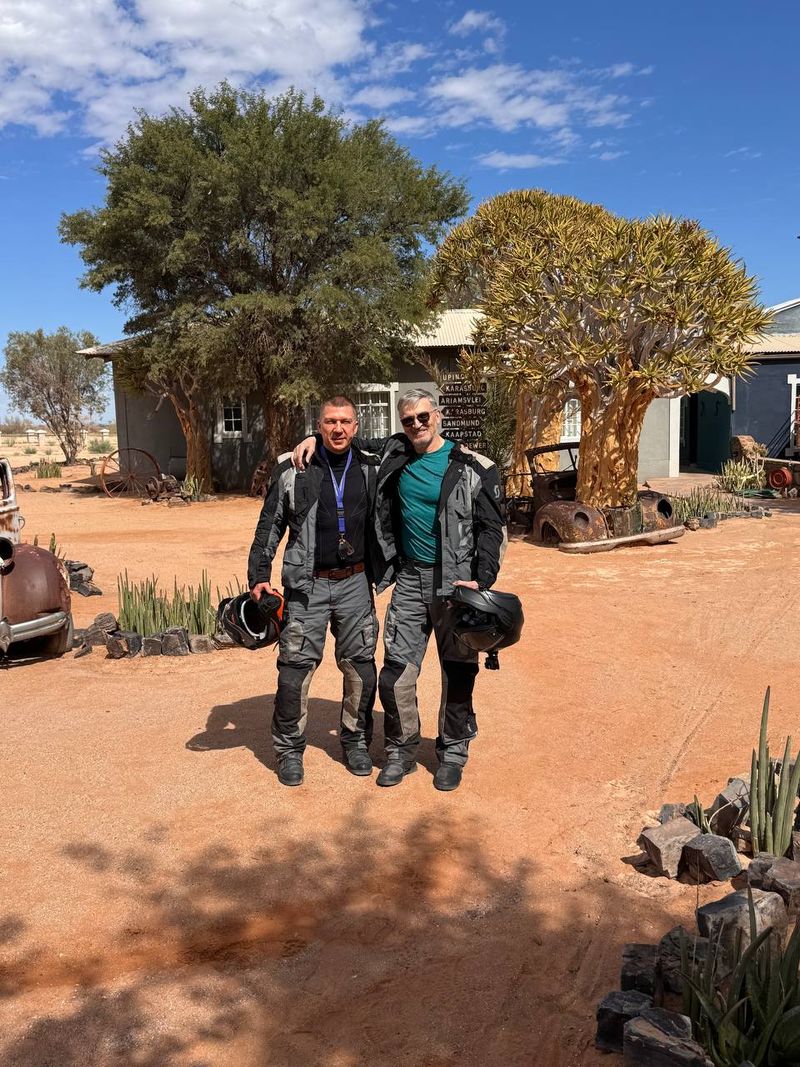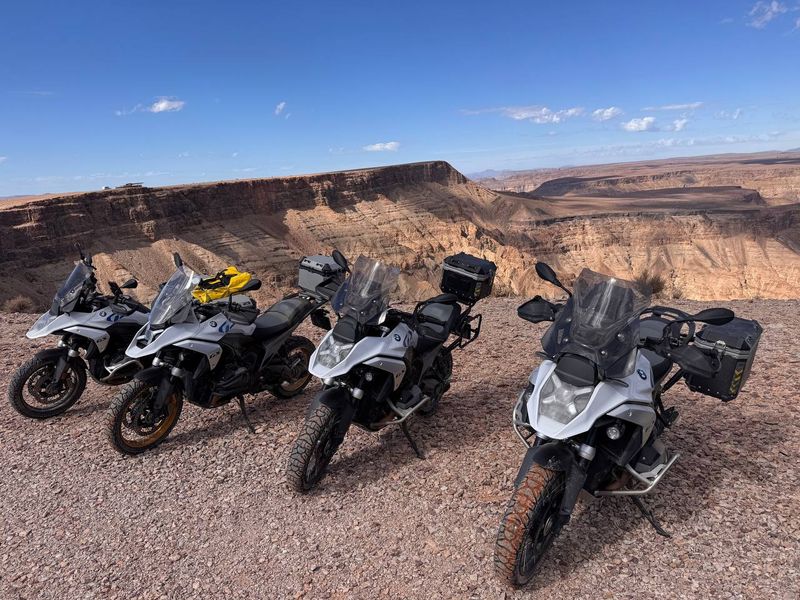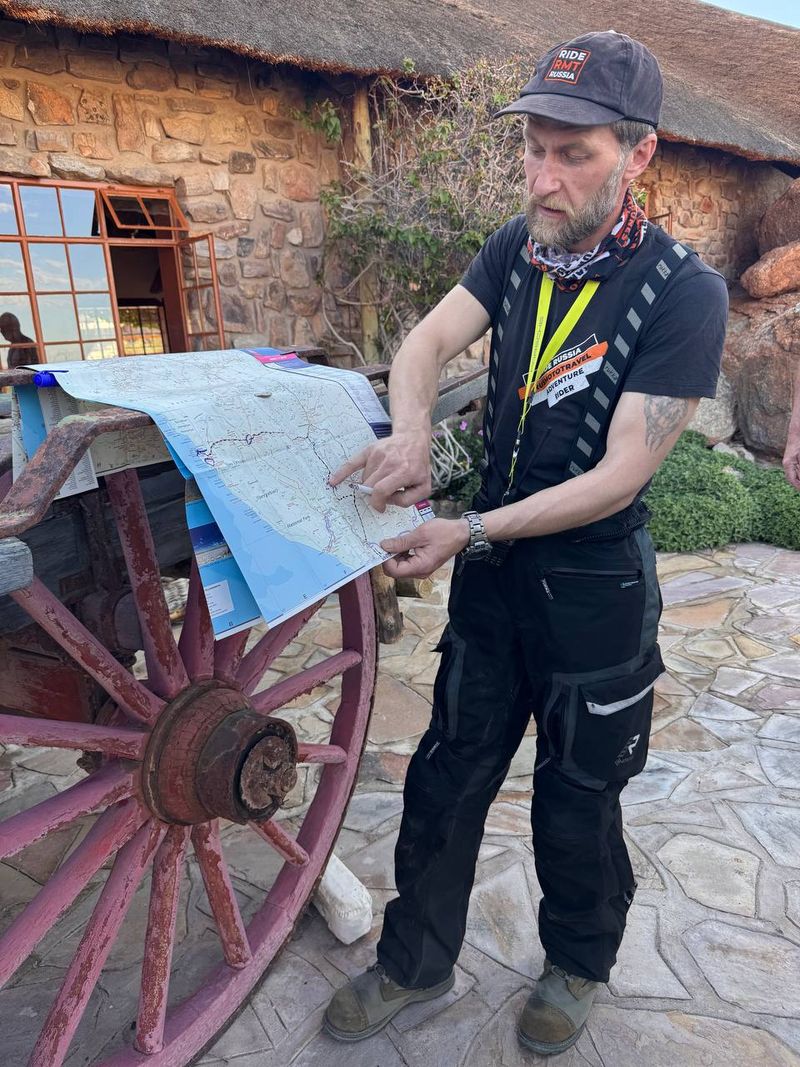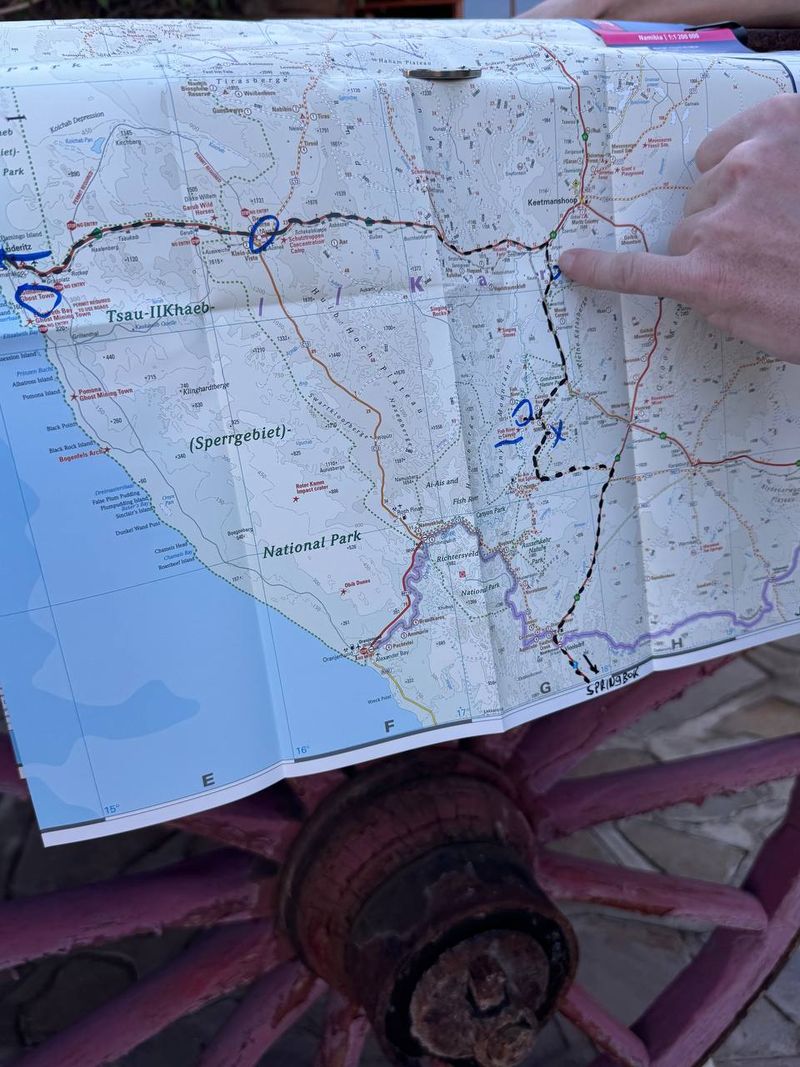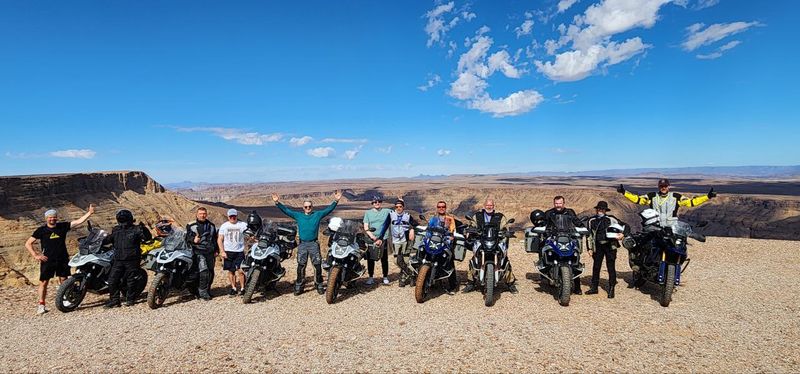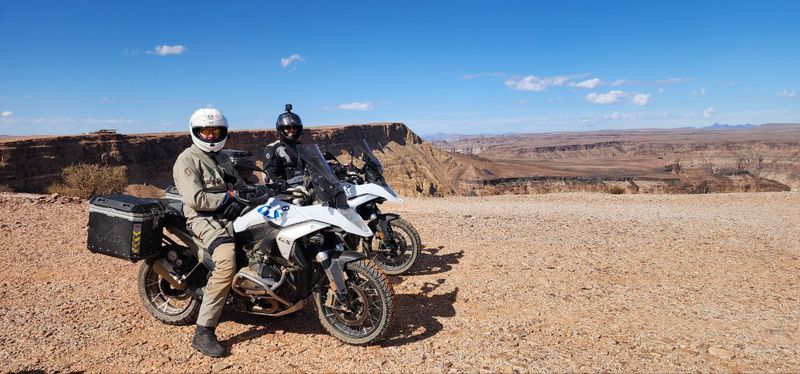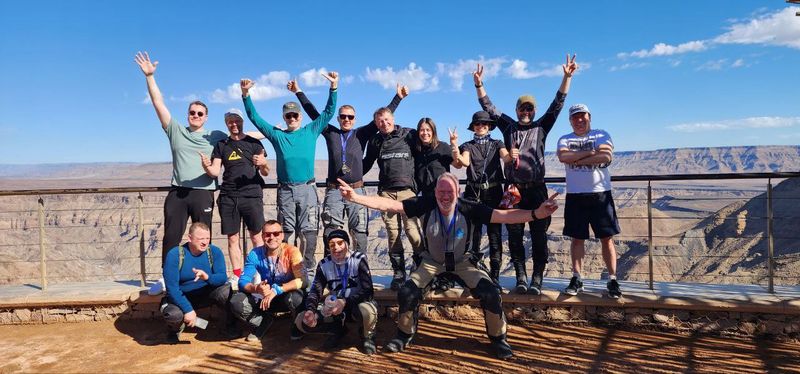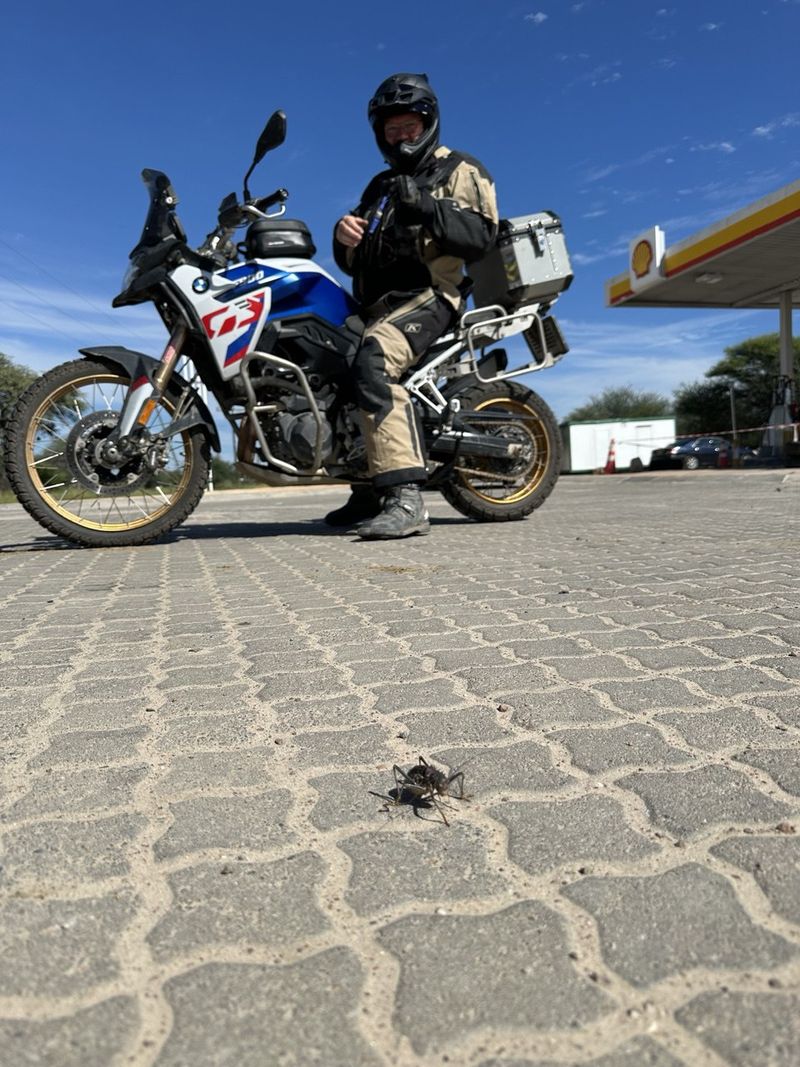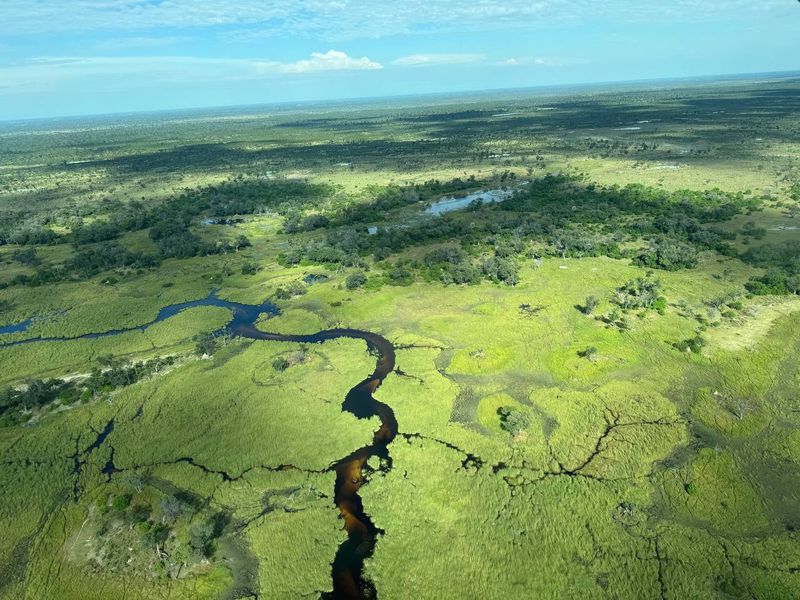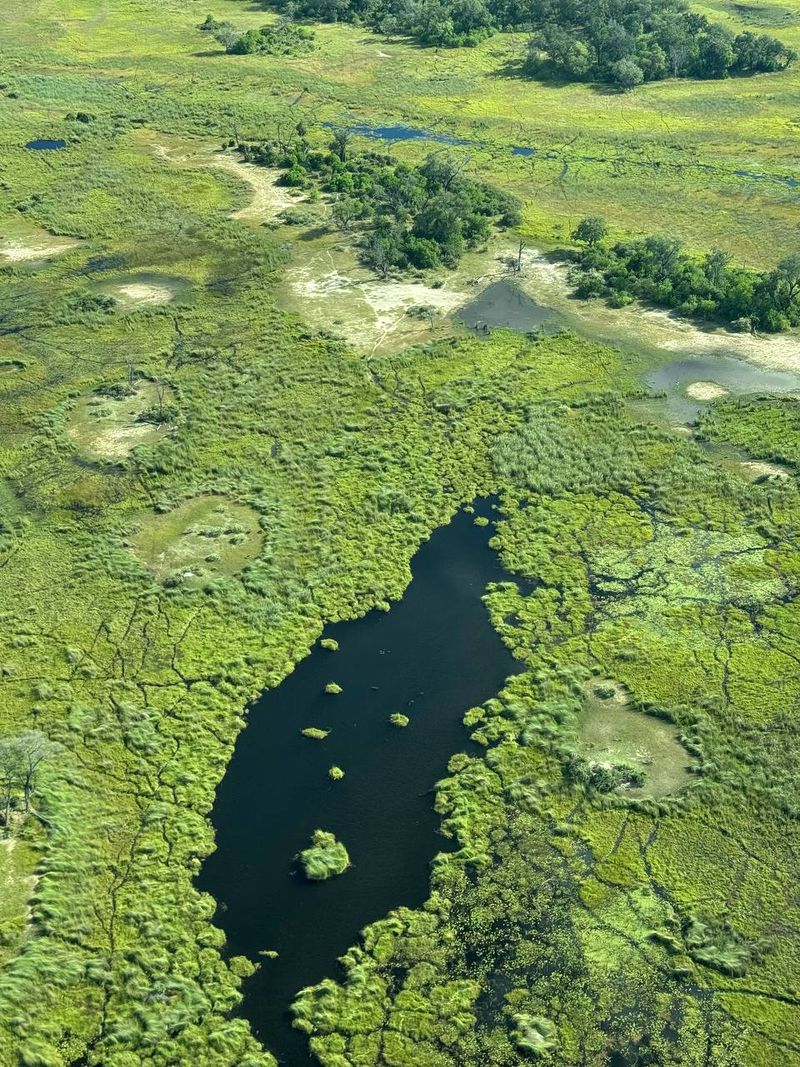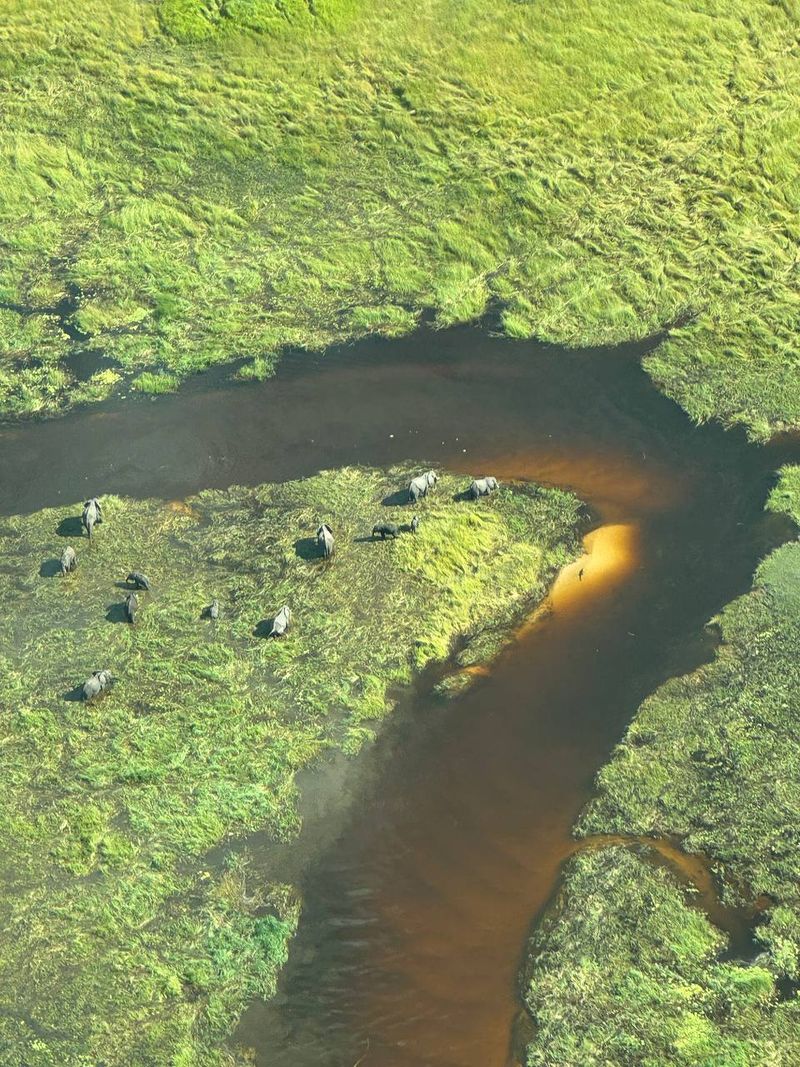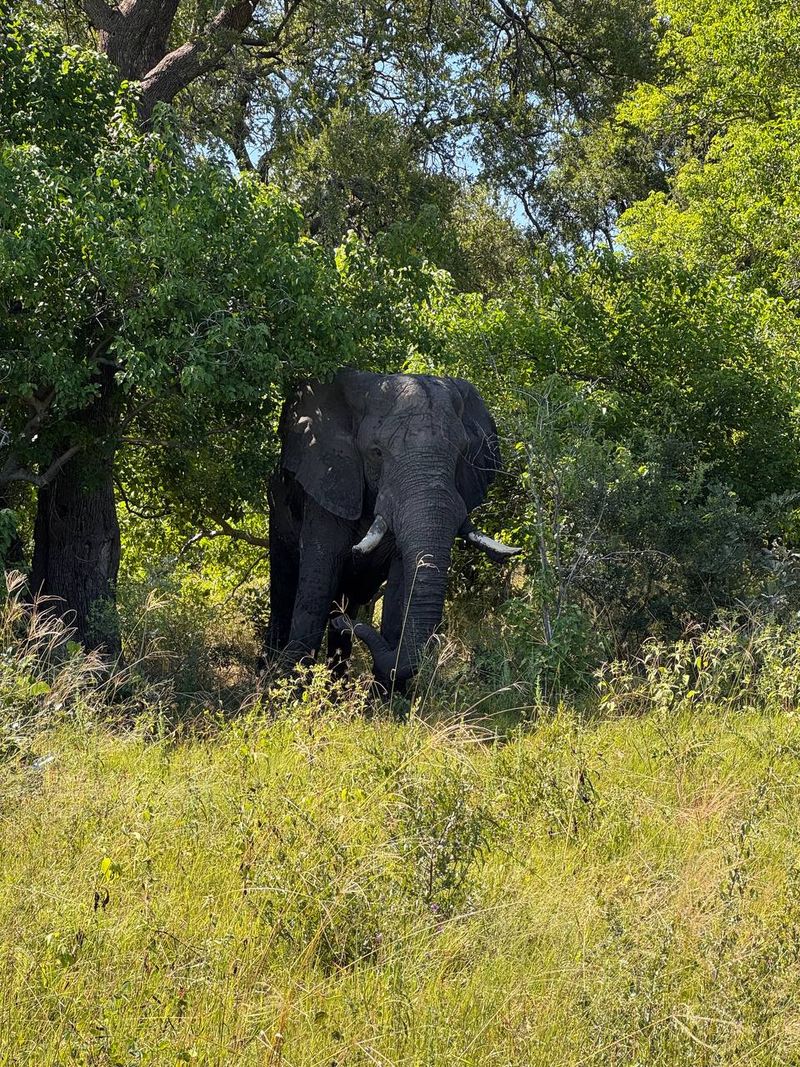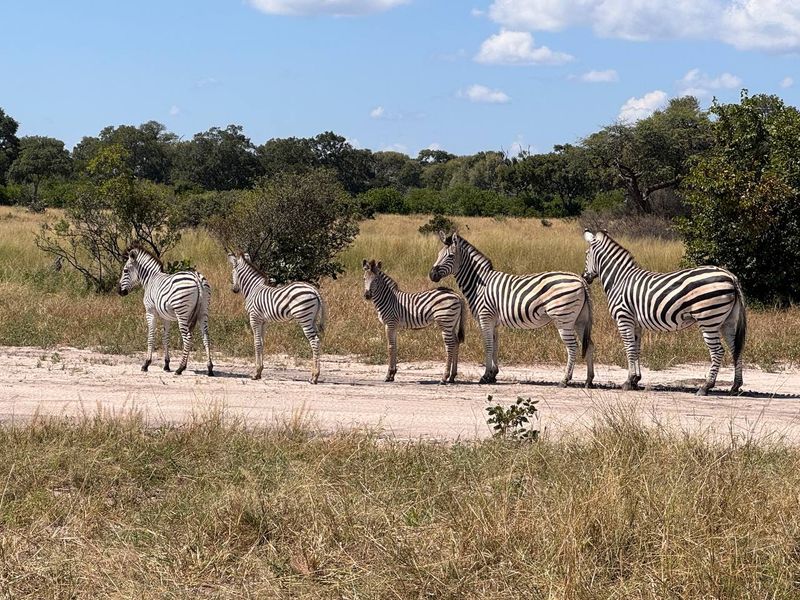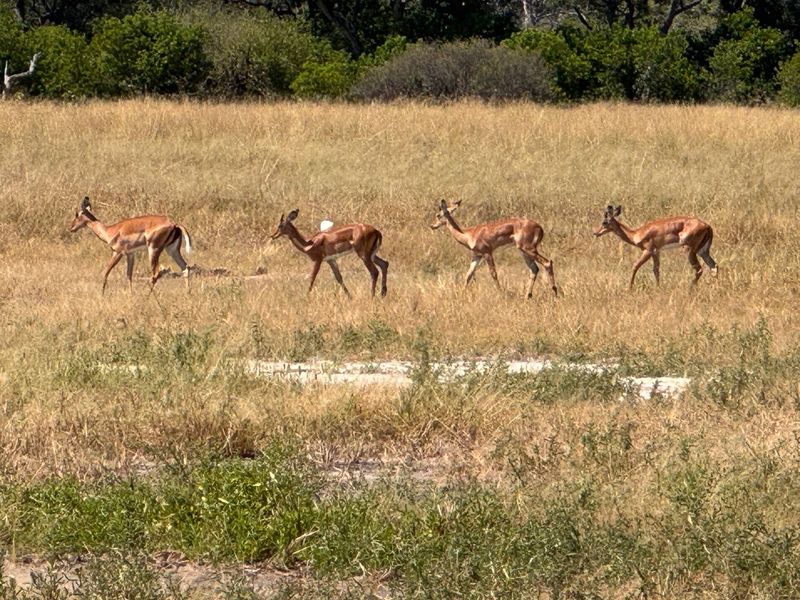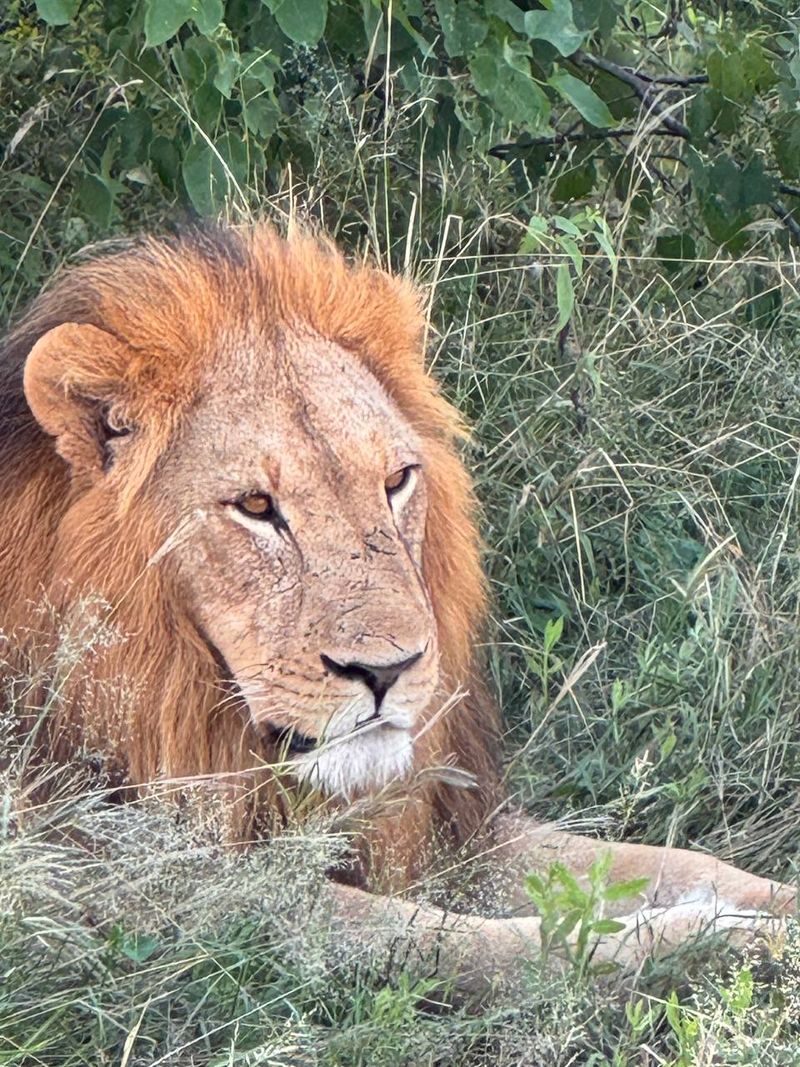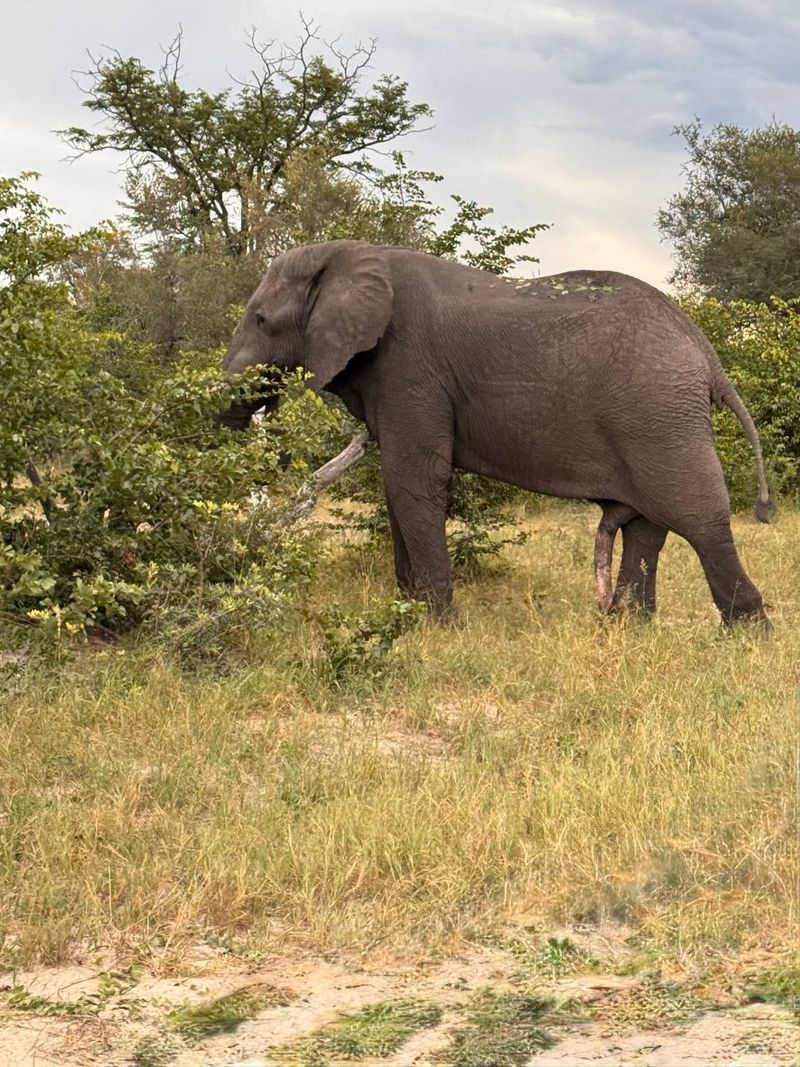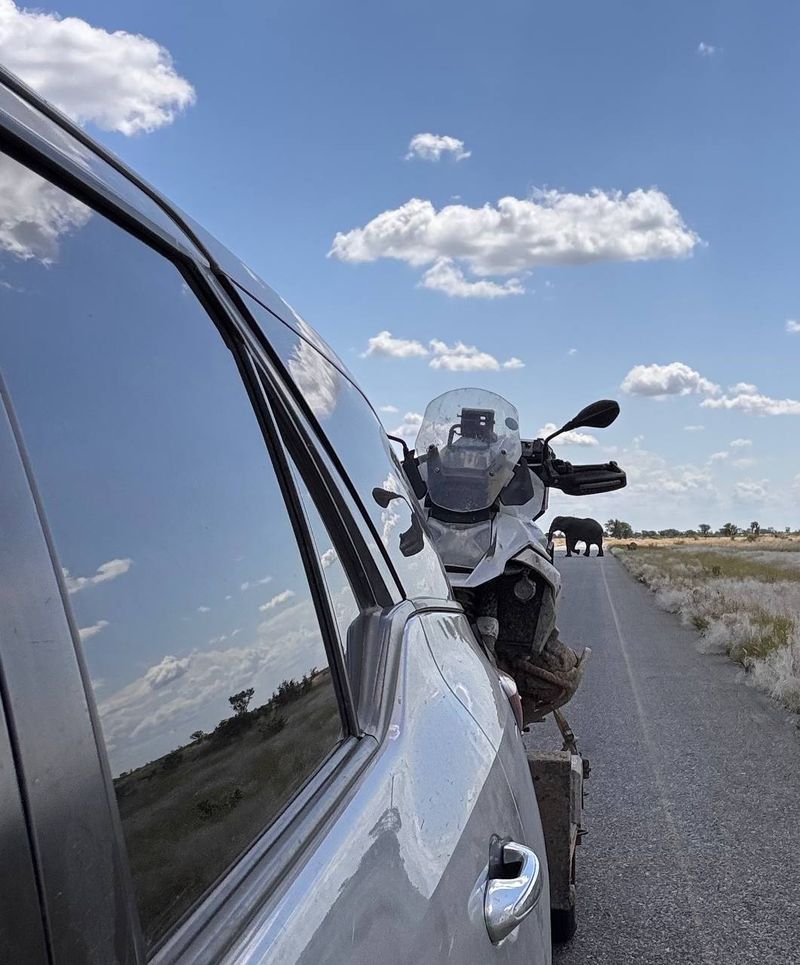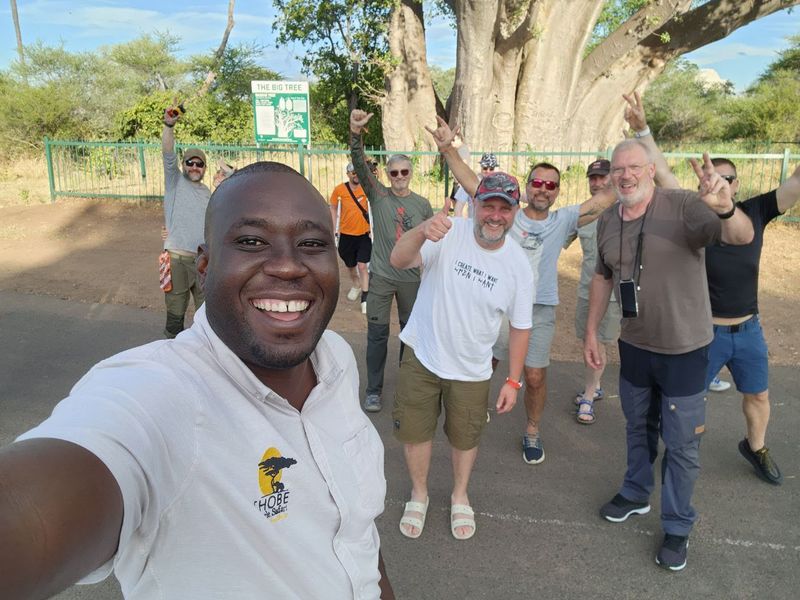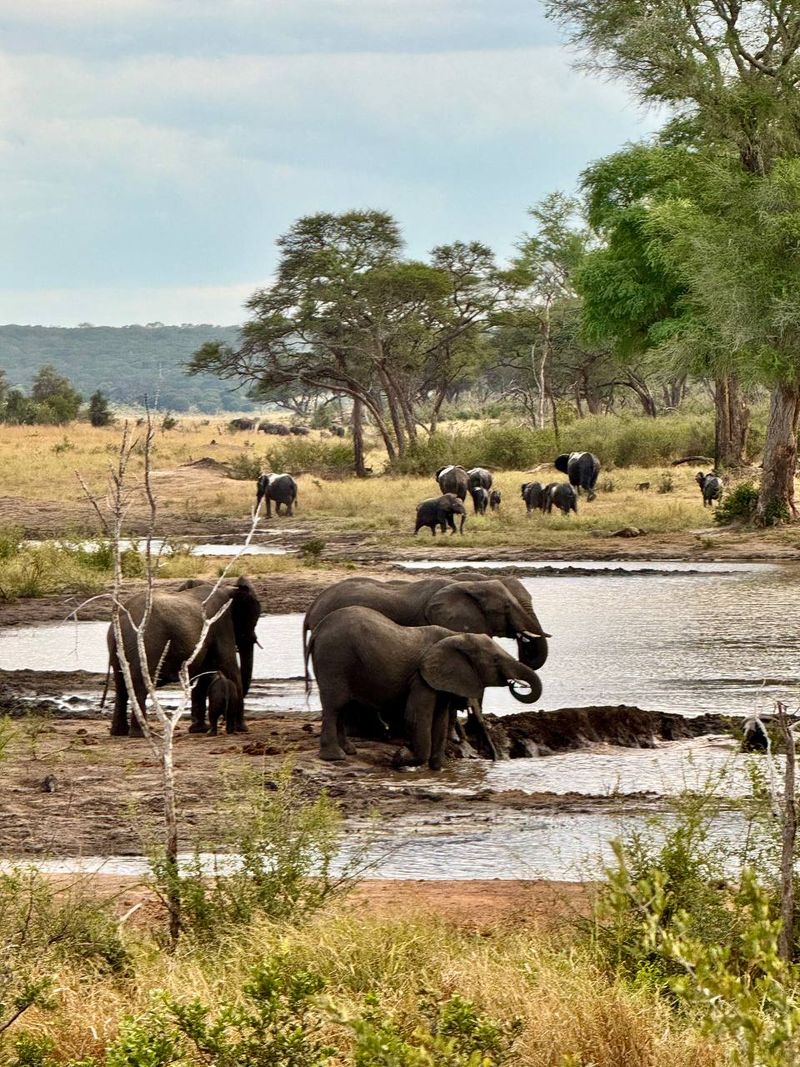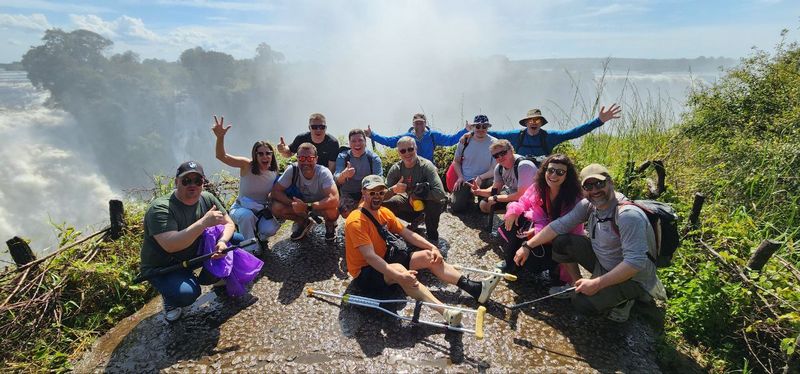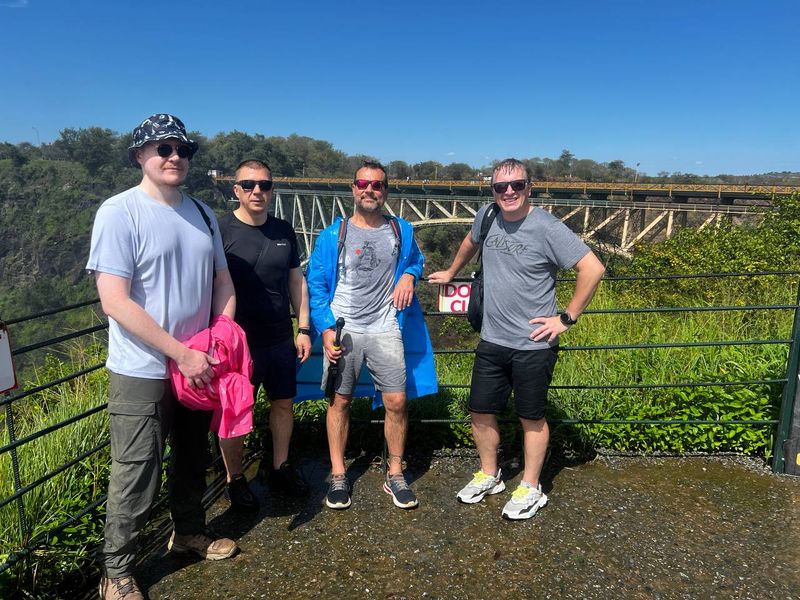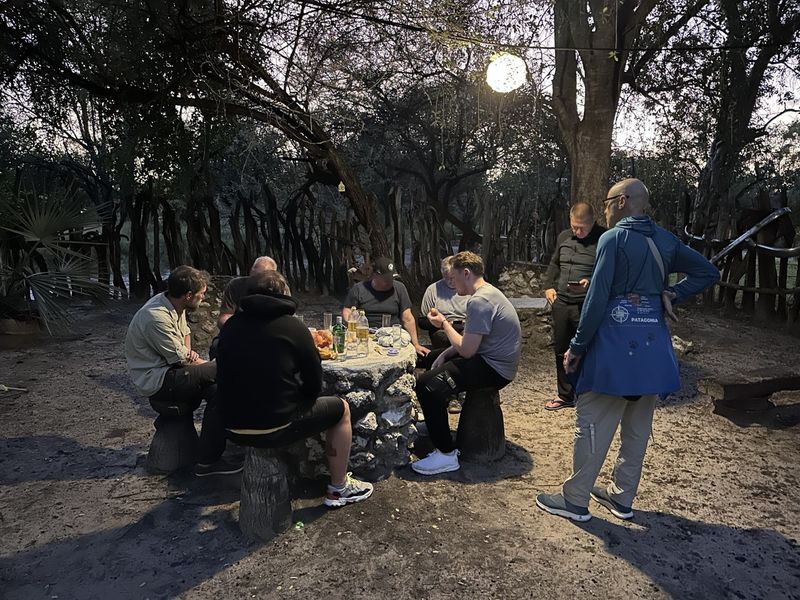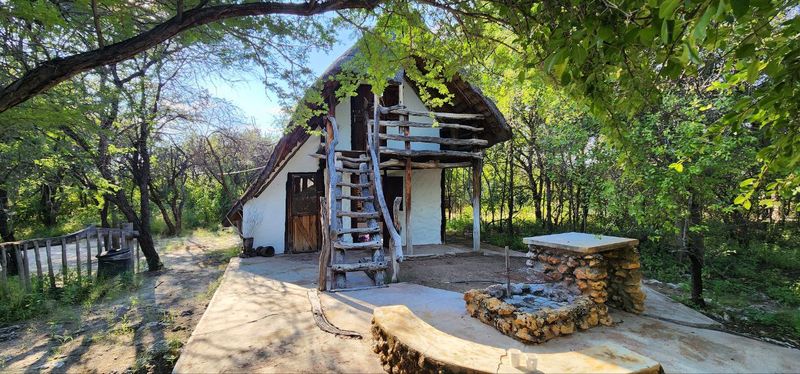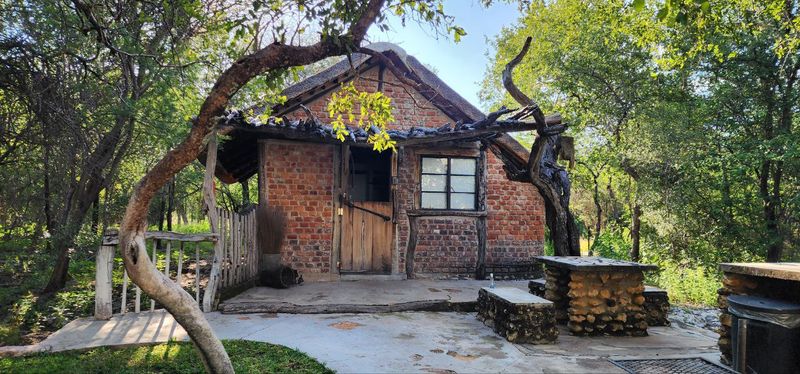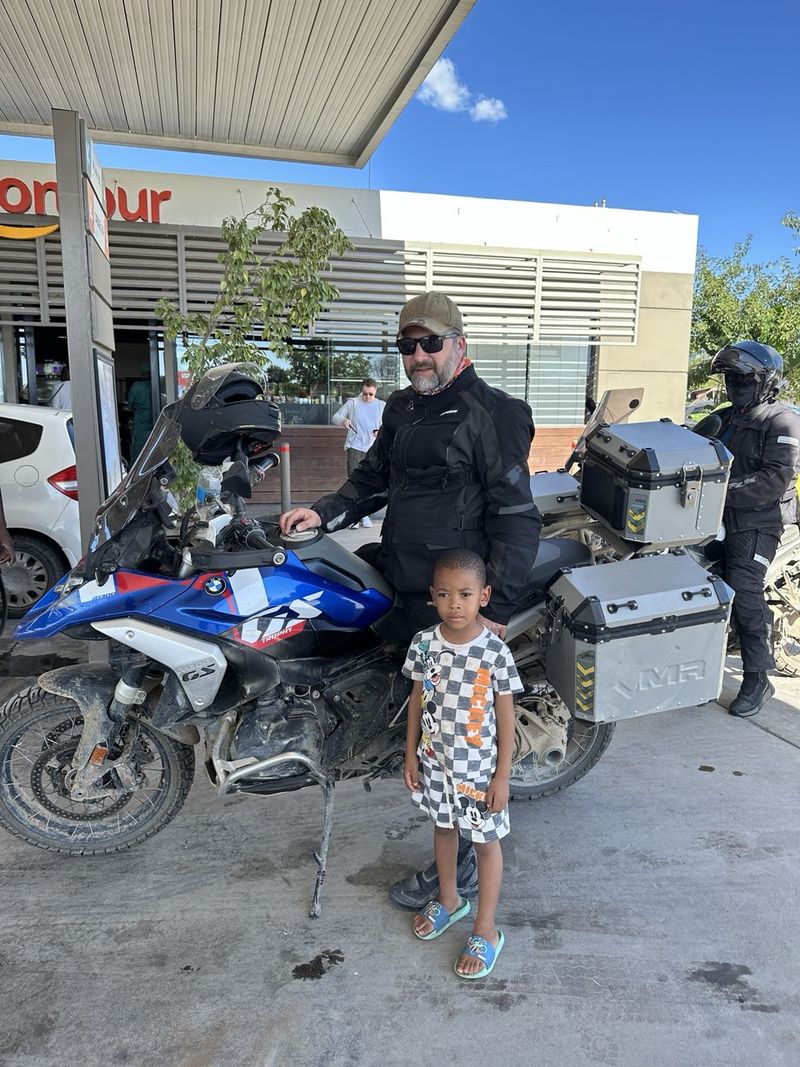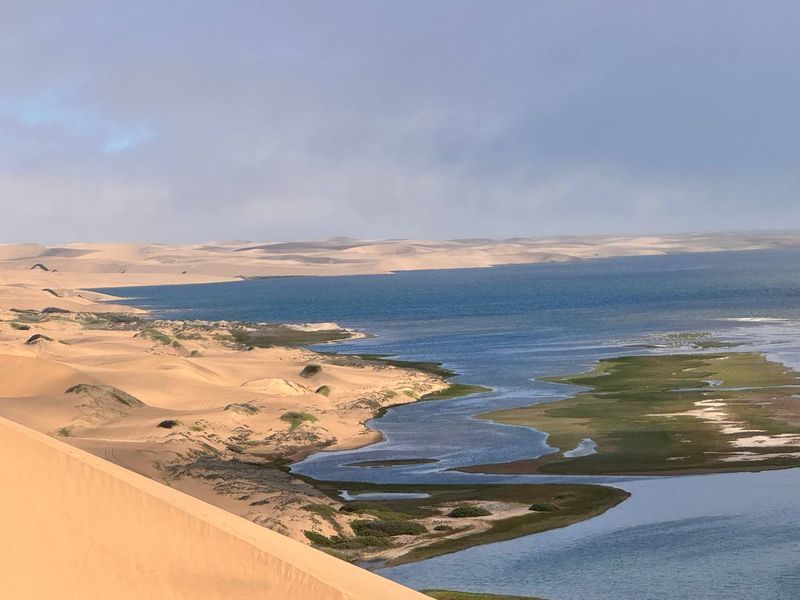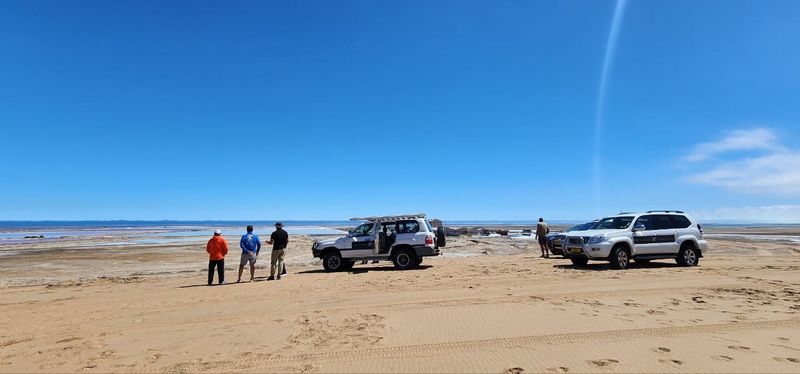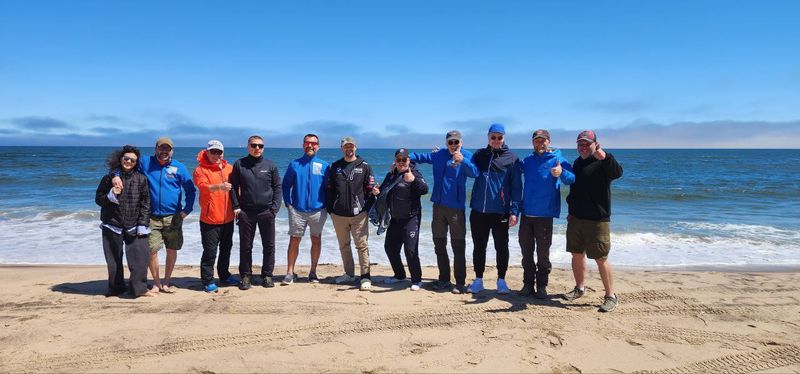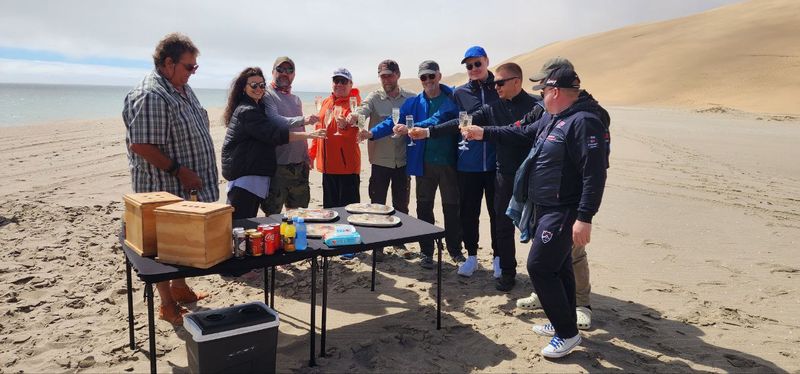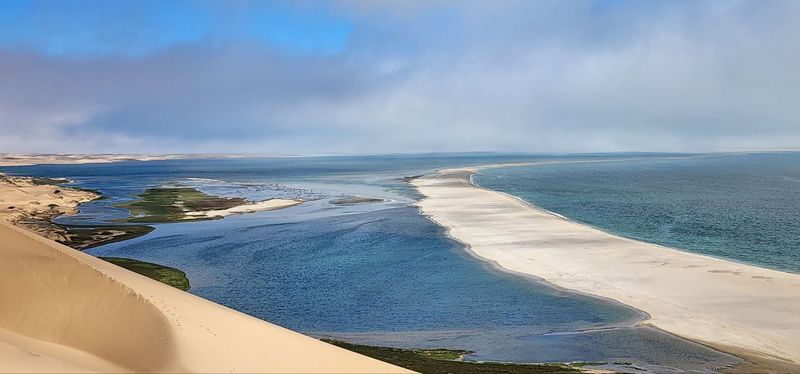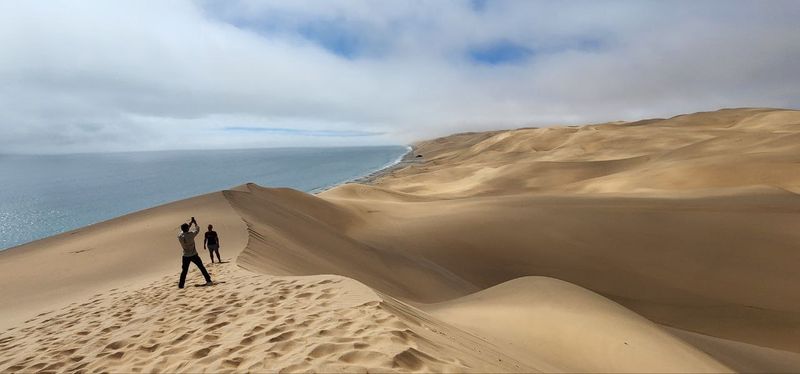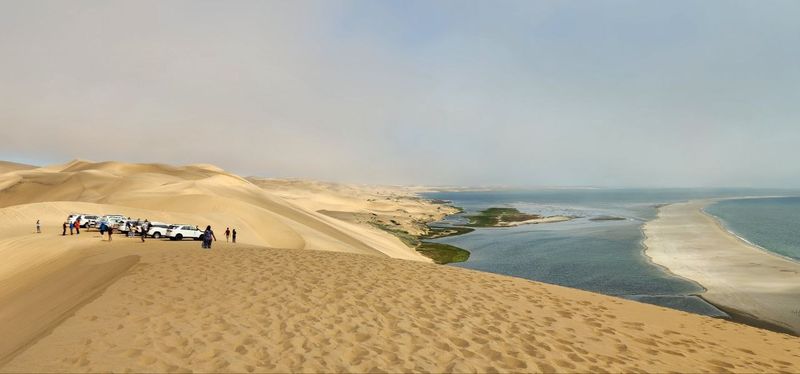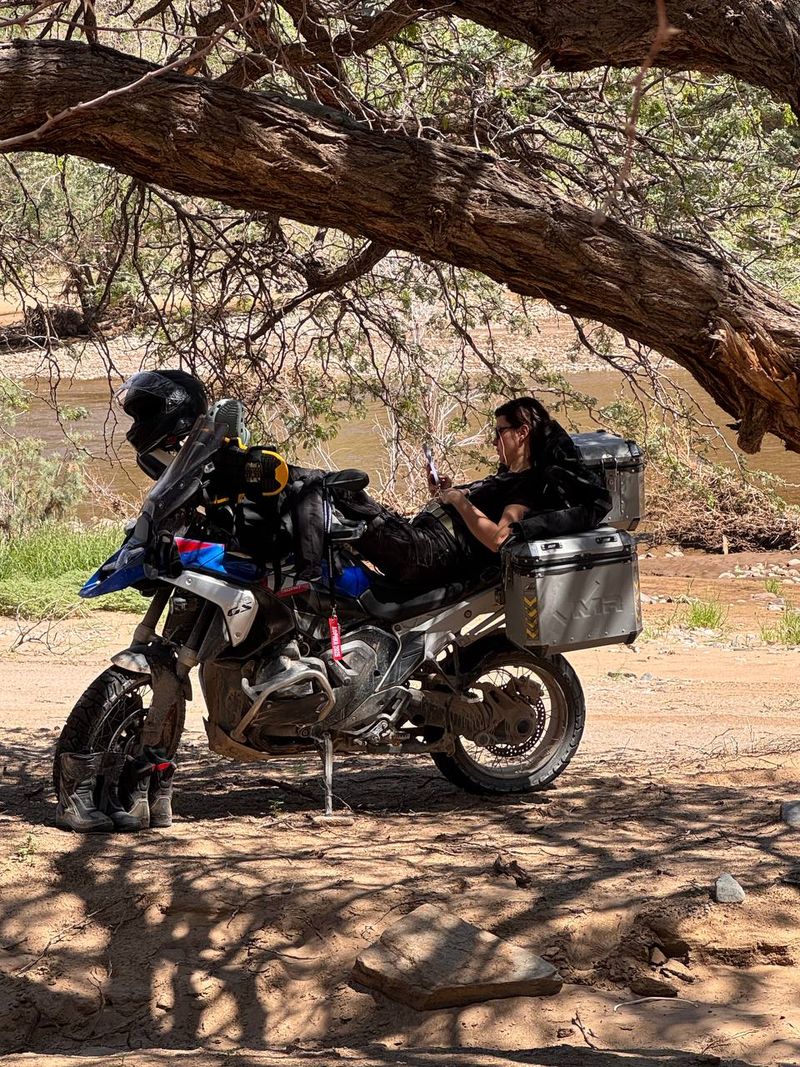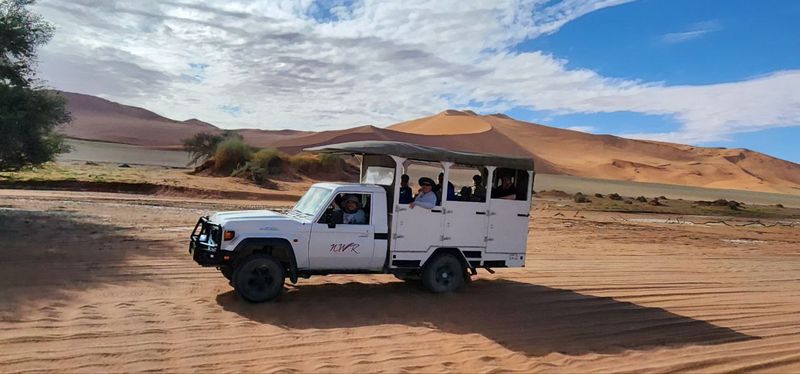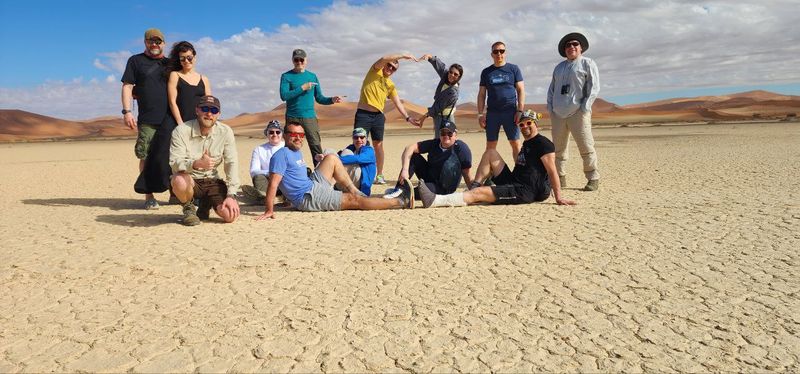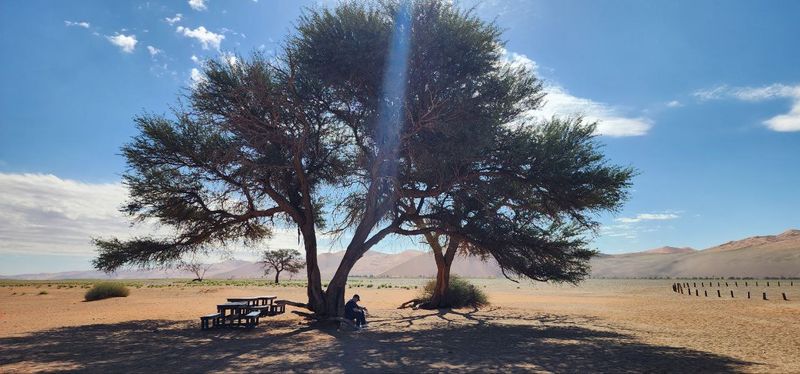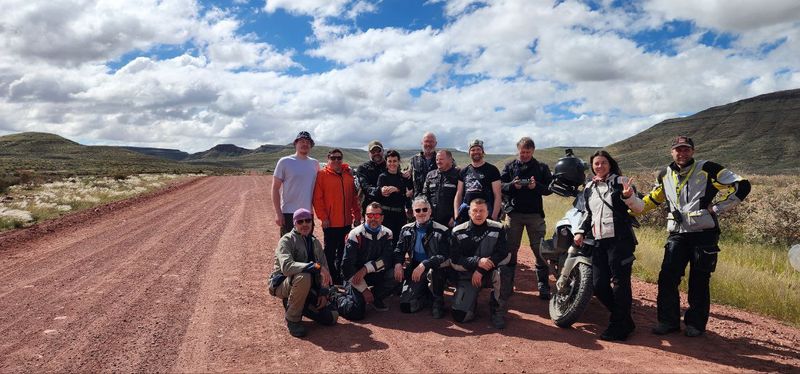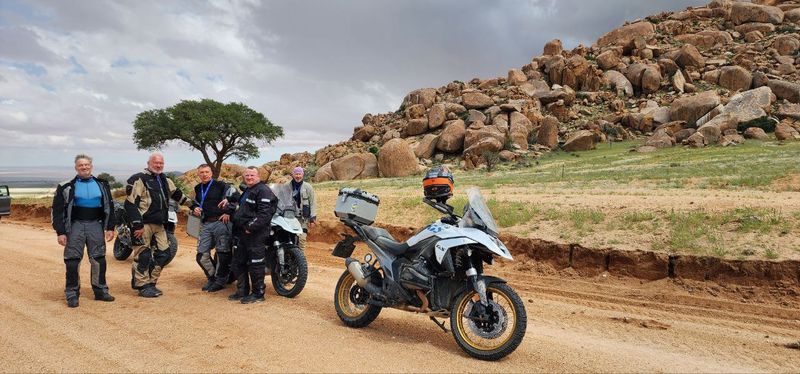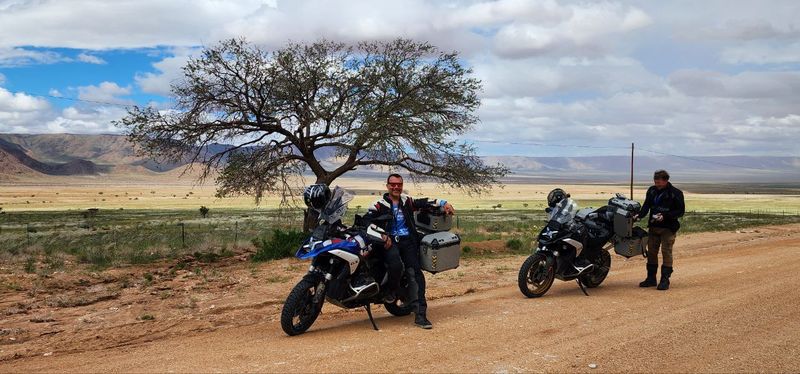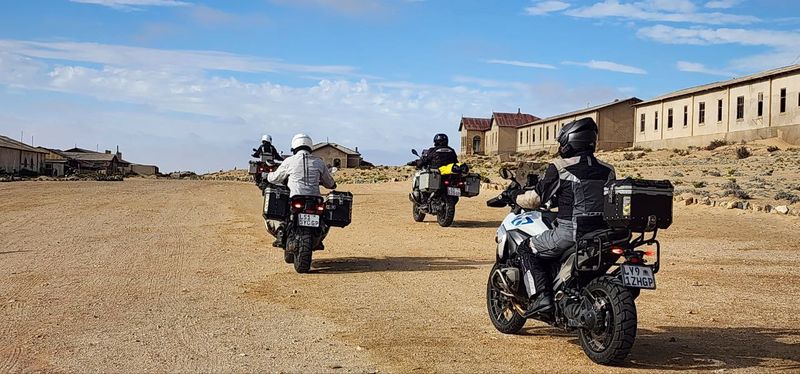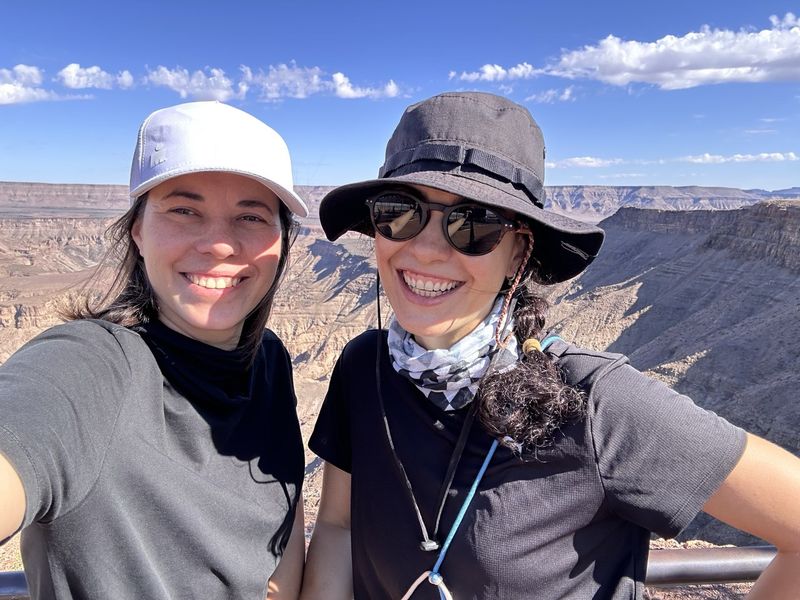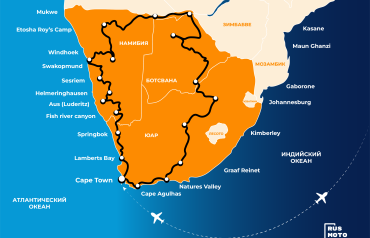- 2026 Dates: April 1-27 (4 places left)
- Duration: 27 days
- Total Distance: 8,000 km
- Difficulty Level: Middle
- Road Conditions: 90% asphalt
- Price with BMW F800GS / F900GS rent – 14 950 Euro
- Price with BMW R1300GS – 16 950 Euro
- Single Room Supplement: 3 000 Euro
- Passenger Price: 4 000 Euro
- Deposit for the motorcycle 2 100 Euro / 2300 USD
Included in the tour price:
- Accommodation in 3-4* hotels (twin rooms)
- Motorcycle rental
- Fuel
- Breakfasts
- Lead guide on a motorcycle
- Support vehicle
- Excursions
- Technical support
Not Included:
- Lunches and dinners
- Medical insurance
- Other personal expenses
Route:
Cape Town – Lamberts Bay – Springbok – Fish river canyon – Aus (Luderitz) – Helmeringhausen – Sesriem – Swakopmund – Windhoek – Etosha Roy’s Camp – Mukwe – Kasane – Maun Ghanzi – Gaborone – Johannesburg – Kimberley – Graaf Reinet – Natures Valley – Cape Agulhas – Cape Town
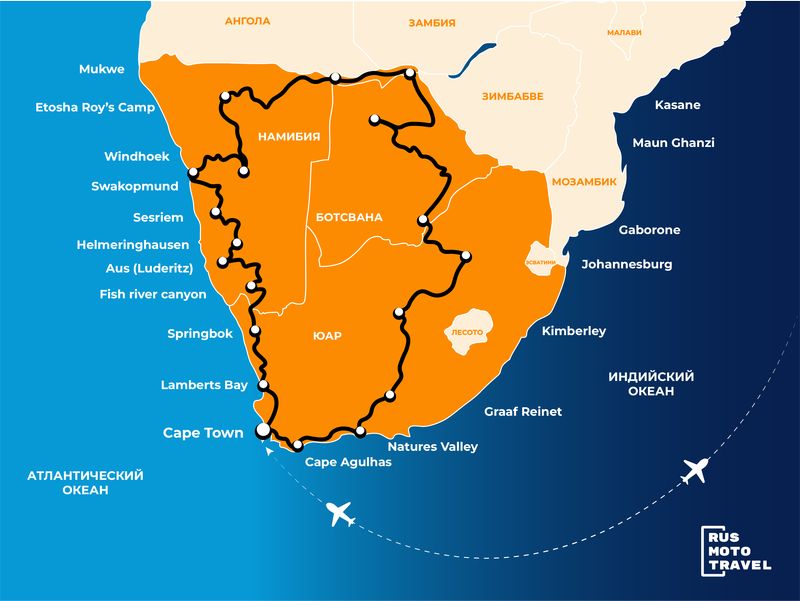
1. Cape town, arrival
Arrival, tpur kick off, getting bikes and welcome dinner.
2. Cape Town – Lamberts Bay, 295 km
First riding day along the Atlantic coast|. While most of our journey will take us inland, we’ll seize every opportunity to ride along the ocean.
We’ll travel with secondary roads and part of the N7 highway through Darling and Langebaan to reach Fredenbourgh. Like many other South African towns, these are named after prominent figures in British colonial administration. Darling, for instance, is named after Sir Charles Darling, the Lieutenant-Governor of the Cape Colony in 1853.
Lamberts Bay is one of the small villages along the Western Coast, where a natural fishing harbor has gradually developed over the years. The most prized catch here is the West Coast rock lobster, also known as crayfish in South Africa. It's often called "red gold" because its shell turns bright red when cooked.
3. Lamberts bay – Springbok, 395 km
In the morning, we'll start with a bit of gravel riding, followed by asphalt roads on the N7 highway, passing through towns like Garies and Kamieskroon. Springbok is the largest town in the Namaqualand region. It's 80% populated by indigenous people, which is uncommon for a town of its size in South Africa. We’ll arrive early enough at the hotel to enjoy a traditional afternoon “stiefelbier”
4. Springbok – Fish river canyon, 280 km
From here, we head into Namibia, crossing the border at Violsdrift. We'll have lunch along the banks of the Orange River before our final stretch to Fish River Canyon. Today, we’ll explore the second-largest canyon in the world. Our hotel is located within the private Gondwana Reserve, just 20 km from the main viewpoint of Fish River Canyon.
Fish River Canyon, with depths reaching up to 550 meters, is the second-largest canyon globally, after the Grand Canyon in the United States. The massive gorge winds about 160 km through the Kubis Massif down to Ai-Ais.
5. Fish river canyon – Aus (Luderitz), 290 km
We continue along gravel roads, heading north along the eastern side of the canyon. Luderitz, named after the German tobacco merchant Adolf Luderitz, is now a thriving export hub for crayfish. These tasty crustaceans inhabit the marine reefs at depths of 9 to 20 meters. Due to environmental protection efforts, only crayfish longer than 65 mm are caught and sold.
6. Luderitz – Helmeringhausen, 290 km
In the morning, we’ll visit the ghost town of Kolmanskop. The diamond rush led to the town’s rapid rise and equally swift abandonment. In the afternoon, we’ll leave the asphalt behind as we take gravel roads for the last 100 km to the Helmeringhausen farm.
7. Helmeringhausen – Sesriem, 245 km
Today, we continue north, following the western side of the Namib Desert, with the central plateau to our right. This untouched, vast landscape seems to stretch endlessly into the horizon.
We need to arrive at Sossusvlei Lodge by early evening to wash off the Namibia dust, switch to jeeps, and head out to the Sossusvlei dunes at sunset. These towering dunes are among the most majestic on Earth.
8. Sesriem – Swakopmund, 350 km
We’ll stay true to gravel roads, which are more common in Namibia than in South Africa. On the way, we’ll stop in Solitaire—a quirky hamlet adorned with vintage cars. Swakopmund, a seaside town known as Namibia’s Riviera, feels more German than Germany itself, with its characteristic architecture and culinary delights. We’ll spend the night in a luxurious hotel, elegantly converted from the town's historic main railway station.
9. Swakopmund, rest day
Everyone needs a break now and then, and today is our planned day of relaxation. Explore Swakopmund or perhaps enjoy a few cold beers on the beach. There's plenty to do in Swakopmund. Those feeling adventurous can go on a safari to the nearby Skeleton Coast or the small fishing village of Henties Bay, which is highly recommended for seafood lovers.
10. Swakopmund – Windhoek, 325 km
Today’s route can be done in two ways: asphalt or gravel. The asphalt route is slightly longer but much faster. If we want to enjoy an evening stroll in Namibia’s capital, we’ll take the asphalt route and arrive in Windhoek by the afternoon.
11. Windhoek – Etosha, 540 km
From the capital, we continue north on the B1 highway towards Etosha National Park, which is close to the Angolan border. This large basin in the desert collects moisture even during the driest periods. Here, you can go on a safari to see lions, leopards, and more, though during the wet season, wildlife tends to stay hidden in the bush, with fewer sightings at watering holes.
12. Etosha – Roy’s Camp, 225 km
If you decide to go on a safari, it’s best to do so before dawn, so you can be in position as the sun rises. Safaris are conducted in vehicles, as motorcycles are not allowed in the reserves. Today’s ride will be shorter, allowing for a late start after the safari.
13. Roy’s Camp – Mukwe, 405 km
We continue north to the Okavango River, which here forms the border between Namibia and Angola. From Rundu, our path heads east, skirting the border with Angola. We’ll spend the night at the start of the delta, where the Okavango begins to fan out into the world’s largest inland delta. The delta itself is located in Botswana, further south. We’ll explore that area in four days, approaching from the south.
14. Mukwe – Kasane, 440 km
This narrow strip of Namibian territory stretches from west to east between Angola and Zambia to the north and Botswana to the south. Today, we’ll encounter many national parks, and with them, their inhabitants. The first part of the day will take us through the savannahs of the Caprivi and Kwando national parks. Upon reaching the banks of the Zambezi River, we’ll leave Namibia and cross into Botswana. Here, between the Zambezi and Chobe rivers, lies Chobe National Park—one of the best in Africa. We’ll ride along its southern edge to Kasane, the starting point for numerous routes and safaris.
15. Kasane, rest day
In the morning, we’ll take a bus excursion to Victoria Falls. We need a day of rest, so we’ll opt for a bus trip. About 95% of the interesting sights at the falls are on the Zimbabwean side, so we’ll head there instead of Zambia. This trip will take most of the day, but afterward, you can cross "seeing the world’s largest waterfall" off your list. In the evening, after returning to the hotel, you can go on another safari in Chobe National Park before sunset.
16. Kasane – Maun, 610 km
This will be an extremely long day of riding through Botswana, a country where the elephant population outnumbers humans. In the afternoon, we’ll pass through the Makgadikgadi Pans, arriving late in the evening in Maun. Our hotel is centrally located, offering a comfortable stay in civilization.
17. Rest Day in the Okavango River Delta
Early in the morning after breakfast, we’ll leave our motorcycles at the hotel and head to the airport with small backpacks for a 30-minute flight to our lodge, located in the heart of the Okavango Delta. We’ll spend the night in the wild, returning to Maun by plane the next morning to continue our journey.
18. Maun – Ghanzi, 300 km
The next two days will take us through the Kalahari Desert, which we’ll circumnavigate counterclockwise to reach Botswana’s capital, Gaborone. We’ll spend the night near the village of Ghanzi in the small Dqae Qare National Park, where we’ll sit by the campfire with Bushmen in the evening.
19. Ghanzi – Gaborone, 670 km
This will be another long day of riding as we continue our journey around the Kalahari. Along the way, we’ll pass only small villages inhabited by indigenous people. We’ll arrive late in the evening in Gaborone.
20. Gaborone – Johannesburg, 410 km
We’re now heading back into South Africa, this time from the east. The capital, Pretoria, and the largest city, Johannesburg, have almost merged into one of the country’s most powerful and densely populated urban areas. We’ll spend the next day here without motorcycles.
21. Johannesburg, rest day
22. Johannesburg – Kimberley, 486 km
Our next destination speaks for itself—Kimberley, the namesake of the kimberlite pipe. The town features a large open-air museum and the original Kimberley Mine, a massive hand-dug hole.
23. Kimberley – Graaf Reinet, 565 km
After long days spent in valleys, deserts, and plateaus of southern Africa, we’ll finally see some twists and turns again. Graaff-Reinet, the fifth-oldest town in the country, also boasts more national monuments than any other town in South Africa. Incidentally, Graaff is a surname, not a title.
24. Graaf Reinet – Natures Valley, 415 km
Today, we will descend back towards the ocean, this time to the Indian Ocean. Passing through Port Elizabeth, we’ll join the Garden Route, which will lead us to the Tsitsikamma Forest. We’ll spend the night on the shores of a bay in a small village.
25. Natures Valley – Cape Agulhas, 440 km
Continuing along the coast of the Indian Ocean, we’ll reach the southernmost point of Africa – Cape Agulhas. Here, the Indian and Atlantic Oceans meet. The distance to Antarctica from this point is still 4200 km.
26. Cape Agulhas – Cape Town, 370 km
Before concluding our tour, we’ll take secondary roads that wind around the most picturesque bays along the ocean shoreline, heading towards the Cape of Good Hope. Afterward, we’ll traverse the famous Garden Route, finishing our journey in Cape Town.
27. Departure
